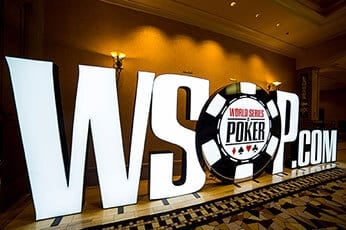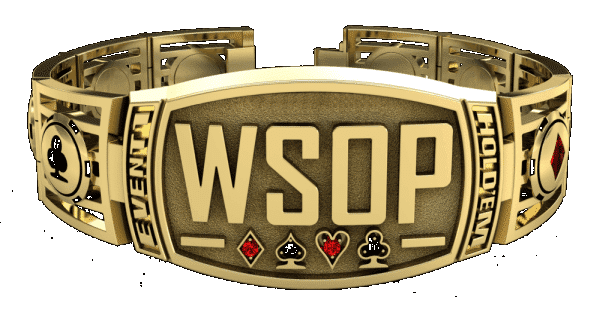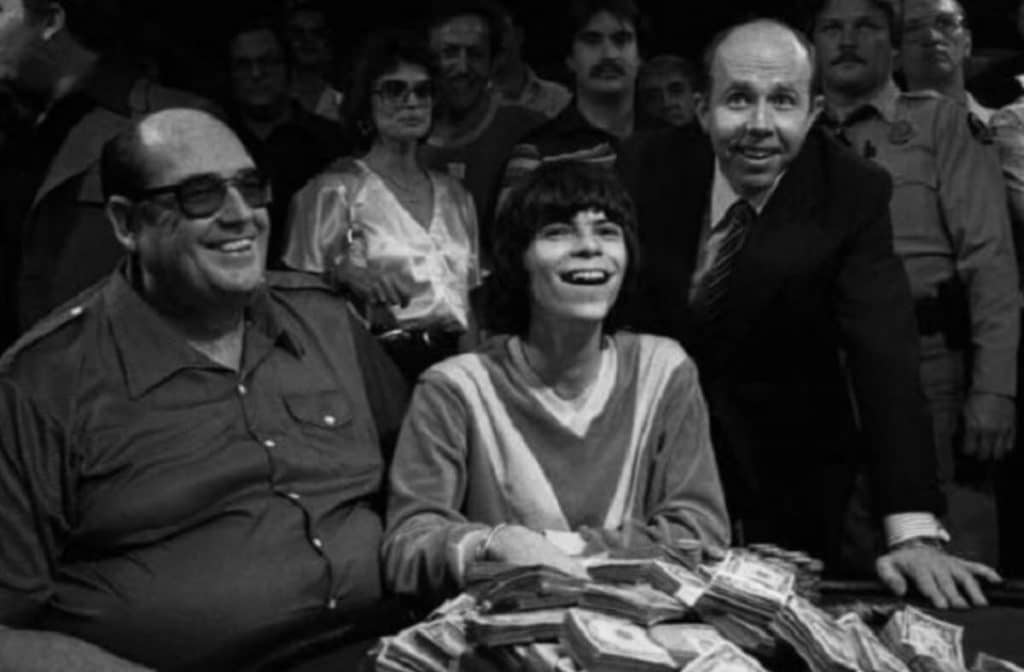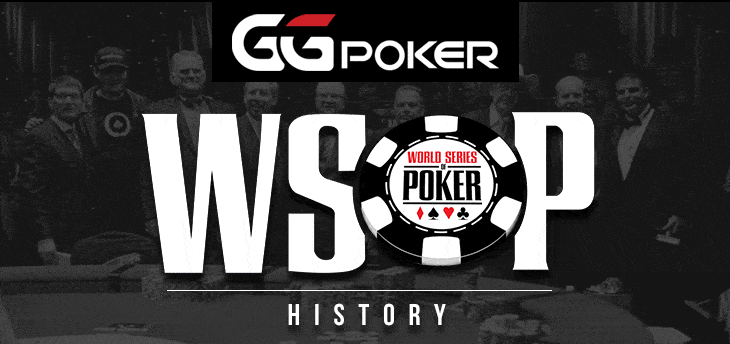The Story of the 1980 WSOP Main Events
A new era of poker action began in 1980 as the World Series of Poker entered its second decade with its youngest-ever winner. As the debate over whether poker players with experience or youth were better raged on in Las Vegas, a breath of fresh air arrived in the form of Stu ‘The Kid’ Ungar, who won the World Championship on his first attempt.
Binion’s Busier Than Ever Before
As the 1980 World Series of Poker began, it was clear that poker was going to be bigger than ever. The opening event of the dozen that would take place was the $500 Limit Seven-Card Stud event and ran with an incredible 176 entries – the first time a WSOP event saw over 100 entrants – gave the eventual winner, Bobby Schwing, a top prize of $52,800, a 60% share of the $88,000 prize pool.
Robert Bone won the second event, a $1,000-entry No Limit Hold’em event, before Pat Callihan won Event #3, the $2,000 Limit Draw High event. In the fourth event, it was Pat’s daughter, Debby Callihan, who took down the $400-entry Women’s Limit Seven-Card Stud event, as a field of 62 entries saw Callihan beat the former WSOP bracelet winner Linda Davis to the gold.
After event wins for Peet Christ in the $5,000 Limit Seven-Card Stud, Sarge Ferris in the $10,000 No Limit 2-7 Draw (Lowball) Rebuy, and Gene Fisher in the $1,500 buy-in NLHE event, the 1980 WSOP was into its second half. Jim Fugatti won the $1,000 Ace to 5 Limit Lowball Draw event before the return of the $600-entry Mixed Doubles event that saw Lynn Harvey and A.J. Myers scoop gold and the top prize of $14,760. Victories for Mickey Appleman and Lakewood Louie in the final two events ($1,000 Limit Seven Card Stud Hi-Lo and $1,000 Limit Razz) before the Main Event set up the big one.

The Fowler Effect & The Appeal of Playing Poker
Ask anyone about the 2003 WSOP and they’ll mention the impact of that year’s winner, Chris Moneymaker as ‘The Moneymaker Effect’. Step back in time to 1980 and ‘The Fowler Effect’ was making waves at the World Series of Poker. Hal Fowler’s victory in the 1979 WSOP Main Event as one of only two ‘amateurs’ in the field saw dozens more amateurs join the ranks in 1980.
A total of 73 players were welcomed to the 1980 World Series of Poker, a growth of just over 25%. With ESPN taking over the reins by filming the Main Event as a one-hour special on television, everyone was desperate to win the big one for a top prize of $365,000. There were many big names in the draw, but one player captured the imagination of the watching public – a 26-year-old from New York City named Stu Ungar.
Known as a gin rummy player – one that fellow poker player and friend Mike Sexton would call him the ‘best in the world’ at – Ungar was playing the WSOP Main Event for the first time. Stu or Stuey, known as ‘The Kid’ in gambling circles, was a big gambler. From guessing the last card to be drawn on the base of a deck drawn at speed for $10,000 to betting on sports for every cent he had to his name, gambling was a huge problem.
At the poker table, however, ‘The Kid’ was about to prove that the future of poker was very bright indeed.

Stuey Mixes It with Former Winners of WSOP Events
In 1979, what helped Hal Fowler win was the lack of players with a wealth of experience at the final table. Former world champions, including Doyle Brunson and Johnny Moss, had long since busted and Fowler was about to play his game. This was definitely not the case in 1980 as the prodigious talent of Ungar, with his whip-smart brain and whip-thin figure joined in the final seven players along with the legends of the game, such as the aforementioned Doyle Brunson and Johnny Moss.
Between them, those two poker legends had won half of the 10 WSOP Main Events held at the time, and both made the final table. Ungar was outmatched in terms of experience, but he was about to demonstrate that he had the poker chops to mix it with the very best. After Richard Clayton went out in seventh place, the money bubble had been reached. The next player would win nothing while the remaining five would all then make a profit on their entry fees.
A pot where both Ungar and Brunson won big with ace-queen on a board of A-A-K-3-8 saw both Gabe Kaplan and Johnny Moss take a hit to their stacks. It was Kaplan who paid the most for it, busting to Moss in sixth place. A year earlier, Kaplan had joked that having been the fourth player to bust in 1978 and the sixth in 1979, he’d only have to ‘play for another fifty years to win it’. He was wrong about having to wait so long to get closer… and about the size of the field in half a century’s time.
The Kid Claims the Crown
With five left, Charles Dunwoody left almost straight away when the final day began at Binion’s under the TV lights. Down to four players, two world champions clashed as Doyle Brunson made quad aces against Johnny Moss to reduce The Grand Old Man of Poker to scraps that would disappear a few hands later to Ungar. When ‘Texas Dolly’ took out Jay Heimowitz in third place, the stage was set for a classic clash between two players at opposite ends of the spectrum of WSOP experience.
With the stacks fairly even, Ungar and Brunson faced off for the title of world champion. In a move that has since become a tradition, Jack Binion brought in the money still to be won, with over half a million in cold hard dollar bills dumped onto the table itself to be battled over between the two men.
In the final hand, a massive amount of the chips in play were in the middle. Ungar, holding five-four of spades, called Brunson’s raise pre-flop with ace-seven of hearts. The flop of A-7-2 gave Brunson top two pair and Texas Dolly bet it, Ungar calling with a gutshot to the straight draw for 10,000 chips. The turn was the three of hearts and that completed Ungar’s ‘wheel’ straight. Ungar bet this time, betting 30,000 in an attempt to provoke his opponent into action.
It worked, and Brunson moved all-in. Ungar snap-called with the best hand and only had to fade four outs, either of the remaining aces or sevens on the river that would give the two-time world champion a full house. The river was the deuce of diamonds and in that moment, Stu Ungar had done it – The Kid had won the world championship and $365,000, as Brunson, now the runner-up, claimed $146,000 in second place.

| Place | Player | Country | Prize |
|---|---|---|---|
| 1st | Stu Ungar | United States | $365,000 |
| 2nd | Doyle Brunson | United States | $146,000 |
| 3rd | Jay Heimowitz | United States | $109,500 |
| 4th | Johnny Moss | United States | $73,000 |
| 5th | Charles Dunwoody | United States | $36,500 |
| 6th | Gabe Kaplan | United States | — |
| 7th | Richard Clayton | United States | — |
1979 WSOP Main Event 1981 WSOP Main Event
About the Author: Paul Seaton has written about poker for over 10 years, interviewing some of the best players ever to play the game such as Daniel Negreanu, Johnny Chan and Phil Hellmuth. Over the years, Paul has reported live from tournaments such as the World Series of Poker in Las Vegas and the European Poker Tour. He has also written for other poker brands where he was Head of Media, as well as BLUFF magazine, where he was Editor.
Whether you’re a fan of high-stakes cash games or the excitement of multi-table poker tournaments, GGPoker is the premier destination for poker enthusiasts. For those aiming to compete for a prestigious WSOP bracelet, push through the ranks for a WSOP Circuit ring, or simply hone their strategies in classic games or poker formats, GGPoker has something for everyone. The platform offers a seamless online poker experience, with innovative features like Smart HUD, PokerCraft, and integrated staking, designed to elevate your game. Whether you’re grinding your way up in daily cash games or competing for life-changing prizes in major online series, GGPoker provides the best environment to play, improve your poker skills, and succeed in the world of online poker. And if you are not sure where to start, you can always play free poker games and learn at the GGPoker School.

